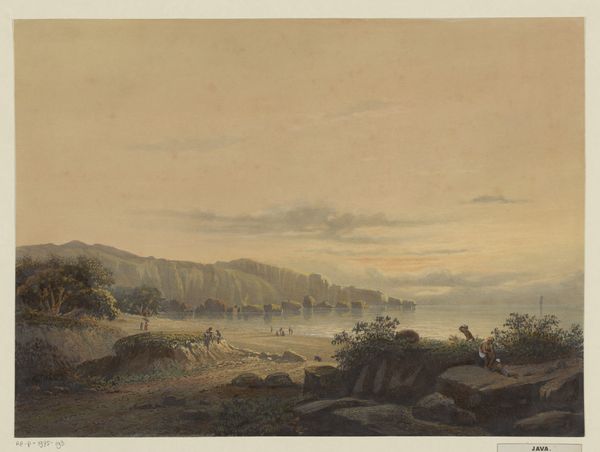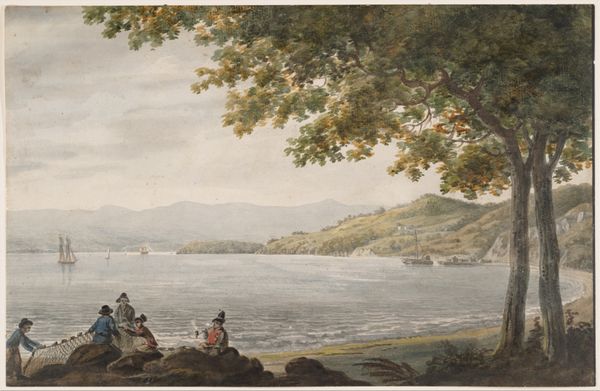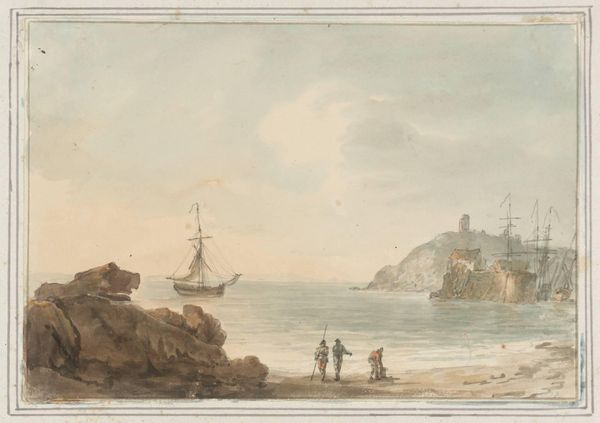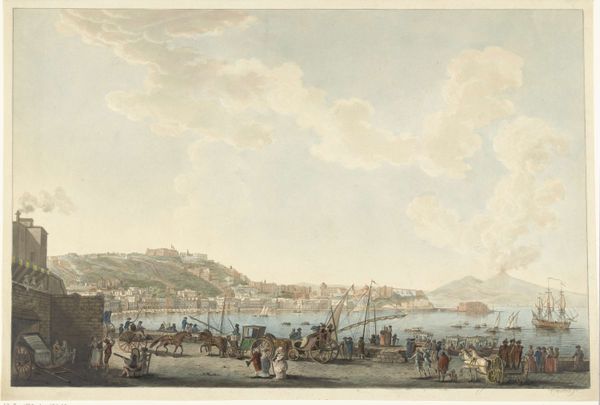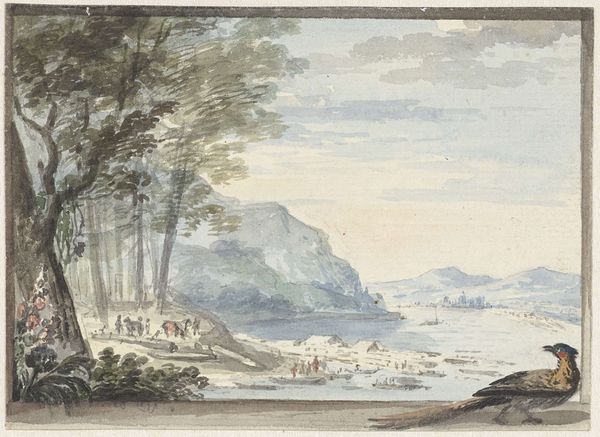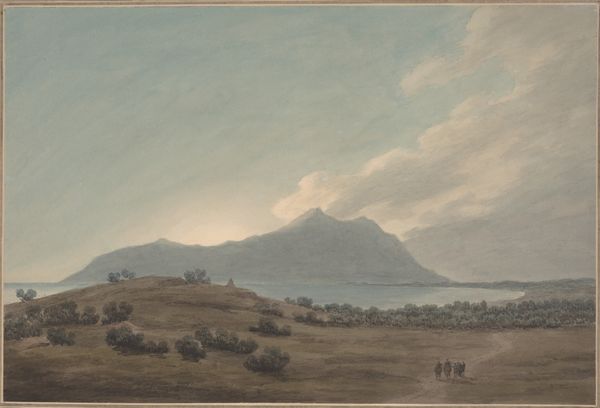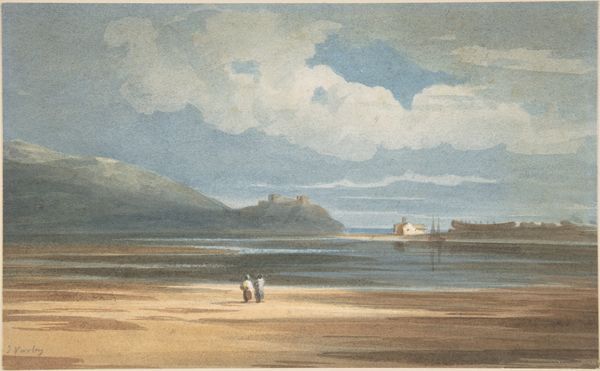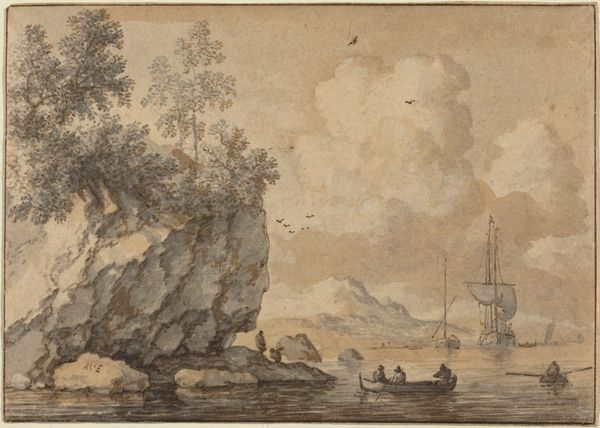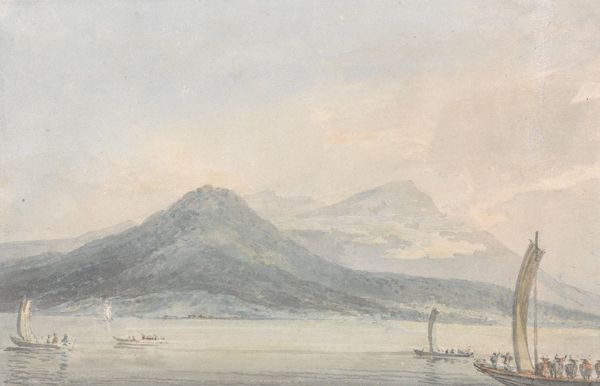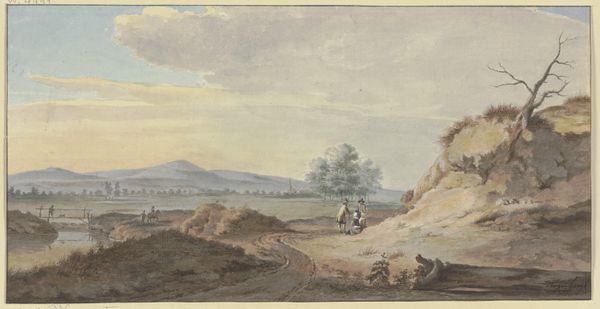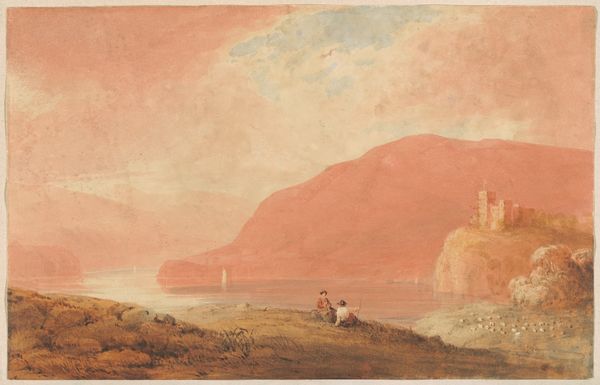
Dimensions: Overall: 29.7 x 53.1 cm (11 11/16 x 20 7/8 in.) mat: 55.9 x 71.1 cm (22 x 28 in.)
Copyright: National Gallery of Art: CC0 1.0
Editor: Here we have Paul Sandby's 1773 watercolor, "The Tide Rising at Briton Ferry." The scene feels vast, almost ethereal with those soft, muted tones. What jumps out at you when you look at this landscape? Curator: The seemingly tranquil scene belies a moment of significant socio-political change. This wasn't simply a picturesque view; Sandby was commissioned by landowners and industrialists. Do you notice how the landscape is both natural and subtly ordered? Editor: Yes, it's not a wild, untamed wilderness. There's a sense of cultivated beauty. Curator: Exactly. These "picturesque" landscapes became a visual language legitimizing land ownership and economic progress during the enclosure movements. How does the presence of the figures along the shore affect your reading? Editor: They seem small against the immensity of the landscape, but now I see them as maybe… markers of human activity and, as you said, ownership. Curator: Precisely. Consider also the market for these works. Prints after these watercolors would be consumed by those same landowners, reinforcing their power through possession of these romanticized views of "their" land. Did Sandby truly represent "the people" and common life, or did he mostly portray elites? Editor: So, it’s a beautiful scene, but one that carries a more complex message about power and property. I hadn't considered that picturesque art could function in that way. Curator: The “picturesque” movement served distinct social interests in claiming access to newly "enclosed" or reorganized land. What do you now find most thought-provoking? Editor: Definitely how this artwork served those who hired the artist. I need to look for power dynamics now, not just beauty.
Comments
No comments
Be the first to comment and join the conversation on the ultimate creative platform.
